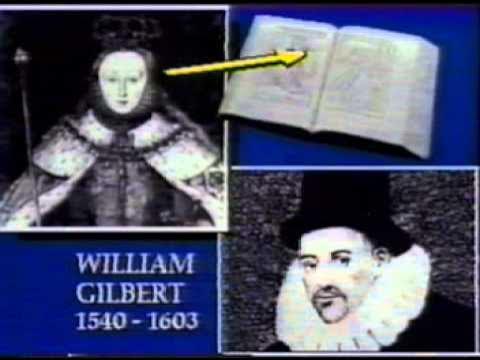Tudo se Transforma, História da Química, História dos Modelos Atômicos
Summary
TLDRThis educational video script explores the history and evolution of atomic models, starting with early concepts from ancient Greece and progressing through key scientific breakthroughs. It highlights the contributions of figures like John Dalton, J.J. Thomson, Ernest Rutherford, Niels Bohr, and Erwin Schrödinger. The script discusses important experiments, such as Thomson's cathode ray experiments and Rutherford's gold foil experiment, and their impact on the development of atomic theory. The story culminates with the modern quantum mechanical model, illustrating how our understanding of atoms has grown over centuries from simple ideas to complex quantum mechanics.
Takeaways
- 😀 The human need for models is rooted in representing and understanding abstract concepts, and scientific models help explain experimental results and predict outcomes.
- 😀 The concept of the atom dates back to ancient Greece, where philosophers like Democritus and Leucippus first theorized about indivisible particles called atoms.
- 😀 John Dalton's atomic model (1808) described atoms as small, indivisible spheres with no charge, and his work introduced the idea that atoms of different elements have different masses.
- 😀 Dalton's atomic model, known as the 'billiard ball' model, was an important step in the development of future atomic models despite its limitations.
- 😀 In 1904, J.J. Thomson proposed the 'plum pudding' model, where atoms were composed of a positively charged 'pudding' with negatively charged electrons embedded in it.
- 😀 Thomson's discovery of the electron helped explain the existence of negatively charged particles in all atoms, earning him the title 'father of the electron.'
- 😀 Ernest Rutherford, in 1909, conducted experiments that led to the conclusion that atoms are mostly empty space with a dense, positively charged nucleus at their center.
- 😀 Rutherford's 'planetary model' depicted electrons orbiting the nucleus, similar to planets orbiting the Sun, and introduced the concept of the atomic nucleus.
- 😀 Niels Bohr in 1913 refined Rutherford's model by introducing energy levels, or 'shells,' around the nucleus and applying quantum theory to explain electron stability.
- 😀 Bohr's work laid the foundation for quantum mechanics, with the development of quantum numbers and the concept of discrete energy levels for electrons in an atom.
- 😀 Erwin Schrödinger's 1926 wave equation contributed significantly to quantum mechanics, describing how particles like electrons behave as waves, and is crucial in understanding atomic behavior at the microscopic level.
Q & A
What is the significance of atomic models in scientific understanding?
-Atomic models are crucial in science as they represent and explain abstract concepts of matter. These models help scientists understand experimental results and predict future behaviors of atoms.
Who is considered the first to propose a scientific model of the atom?
-John Dalton, an English chemist, meteorologist, and physicist, is considered the first to propose a scientific model of the atom in 1808. His model depicted atoms as indivisible, solid spheres.
What was Dalton's atomic model like?
-Dalton's atomic model was based on the idea that atoms are solid, indivisible, and neutral spheres. He also proposed that atoms of different elements have different masses.
What is daltonism, and how is it connected to John Dalton?
-Daltonism, or color blindness, is a condition where individuals cannot distinguish certain colors. It is named after John Dalton because he was one of the first to document the condition, which he himself had.
What was JJ Thomson's contribution to atomic theory?
-In 1904, JJ Thomson proposed the 'plum pudding' model of the atom, suggesting that the atom consists of a positively charged sphere with negatively charged electrons embedded within it.
How did Ernest Rutherford's experiments challenge previous atomic models?
-Rutherford's gold foil experiment in 1909 revealed that atoms are mostly empty space, with a small, dense, positively charged nucleus at the center. This disproved Thomson's 'plum pudding' model.
What was Rutherford's atomic model and how did it differ from earlier models?
-Rutherford's model, known as the planetary model, proposed that electrons orbit a small, dense, positively charged nucleus, similar to how planets orbit the sun. This model replaced the idea of a uniform atom proposed by Thomson.
What key development did Niels Bohr bring to the atomic model?
-Niels Bohr improved Rutherford's model by introducing the concept of quantized orbits. He proposed that electrons exist in specific energy levels and that they can absorb or emit energy when moving between these levels.
How did Bohr's model explain the stability of electrons?
-Bohr's model explained that electrons could orbit the nucleus without losing energy, unlike in Rutherford's model, because the electrons occupy fixed energy levels and do not radiate energy continuously.
What role did Schrödinger's equation play in modern atomic theory?
-Schrödinger's equation, published in 1926, provided a mathematical description of the behavior of electrons in atoms. It is fundamental to quantum mechanics and allows for the calculation of probabilities regarding the position and energy of particles.
Outlines

このセクションは有料ユーザー限定です。 アクセスするには、アップグレードをお願いします。
今すぐアップグレードMindmap

このセクションは有料ユーザー限定です。 アクセスするには、アップグレードをお願いします。
今すぐアップグレードKeywords

このセクションは有料ユーザー限定です。 アクセスするには、アップグレードをお願いします。
今すぐアップグレードHighlights

このセクションは有料ユーザー限定です。 アクセスするには、アップグレードをお願いします。
今すぐアップグレードTranscripts

このセクションは有料ユーザー限定です。 アクセスするには、アップグレードをお願いします。
今すぐアップグレード関連動画をさらに表示

MODELOS ATÔMICOS: Dalton, Thomson, Rutherford e Rutherford-Bohr

Química - Natureza elétrica da matéria e núcleo atômico (prof. Luiz Landim)

IPA Kelas 9 Semester 2 : Partikel Penyusun Materi (Part 1 : atom dan molekul)

Atomic Structure | Grade 8 Science DepEd MELC Quarter 3 Module 3

Uma Breve História do Átomo

A Estrutura do Átomo - 1/6 - Os primeiros modelos
5.0 / 5 (0 votes)
